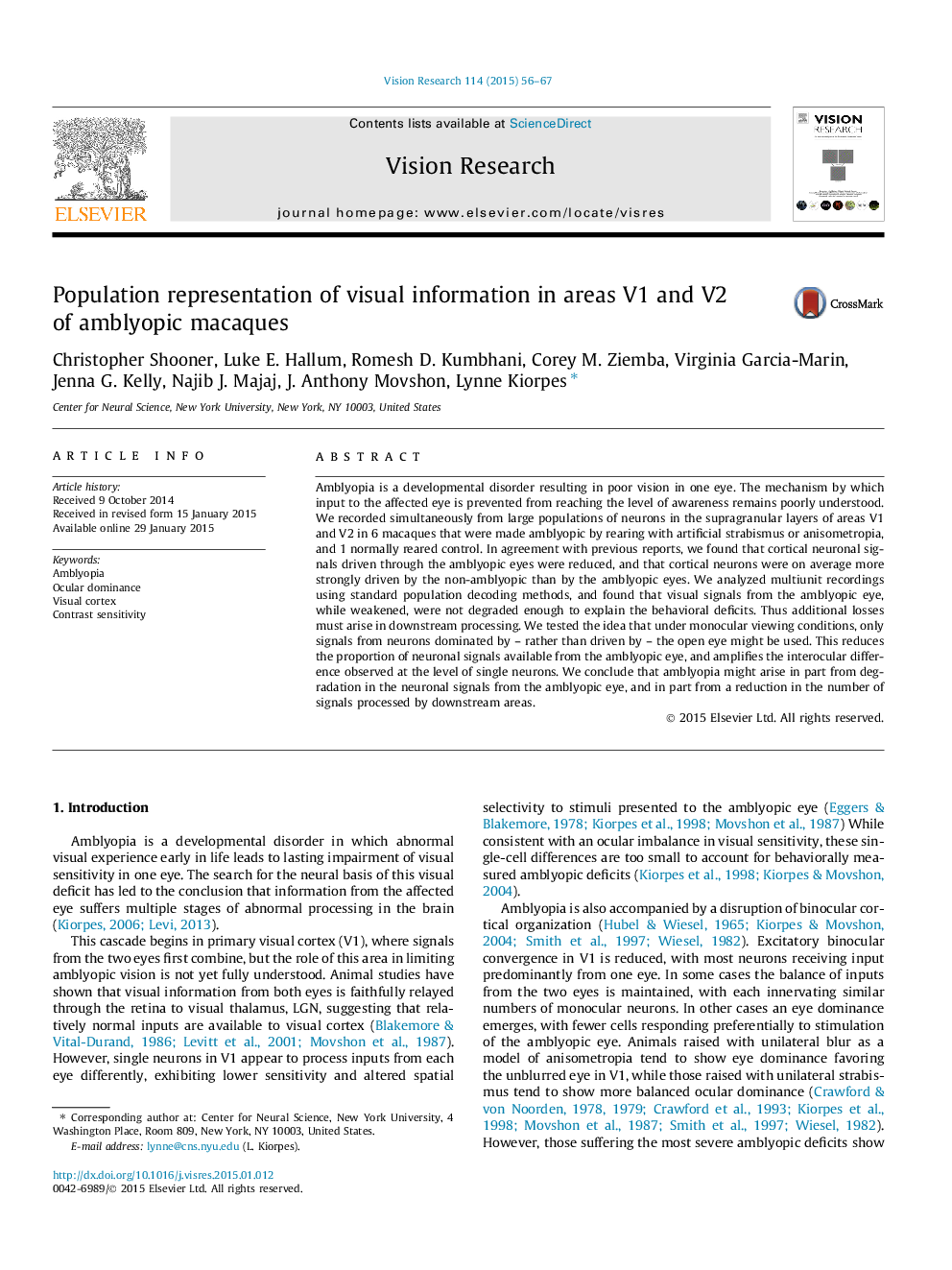| کد مقاله | کد نشریه | سال انتشار | مقاله انگلیسی | نسخه تمام متن |
|---|---|---|---|---|
| 4033599 | 1603183 | 2015 | 12 صفحه PDF | دانلود رایگان |

• Amblyopic visual cortex has a weak representation of the amblyopic eye.
• The weak representation is greater in fovea, ipsilateral to the amblyopic eye.
• Neural populations in amblyopic cortex respond to stimuli not visible perceptually.
• Pooled neural output yields better sensitivity than the amblyopic eye.
• Reduced visual sensitivity may be explained by subsampling of amblyopic eye neurons.
Amblyopia is a developmental disorder resulting in poor vision in one eye. The mechanism by which input to the affected eye is prevented from reaching the level of awareness remains poorly understood. We recorded simultaneously from large populations of neurons in the supragranular layers of areas V1 and V2 in 6 macaques that were made amblyopic by rearing with artificial strabismus or anisometropia, and 1 normally reared control. In agreement with previous reports, we found that cortical neuronal signals driven through the amblyopic eyes were reduced, and that cortical neurons were on average more strongly driven by the non-amblyopic than by the amblyopic eyes. We analyzed multiunit recordings using standard population decoding methods, and found that visual signals from the amblyopic eye, while weakened, were not degraded enough to explain the behavioral deficits. Thus additional losses must arise in downstream processing. We tested the idea that under monocular viewing conditions, only signals from neurons dominated by – rather than driven by – the open eye might be used. This reduces the proportion of neuronal signals available from the amblyopic eye, and amplifies the interocular difference observed at the level of single neurons. We conclude that amblyopia might arise in part from degradation in the neuronal signals from the amblyopic eye, and in part from a reduction in the number of signals processed by downstream areas.
Journal: Vision Research - Volume 114, September 2015, Pages 56–67